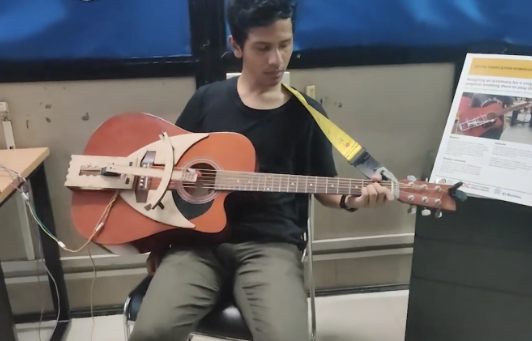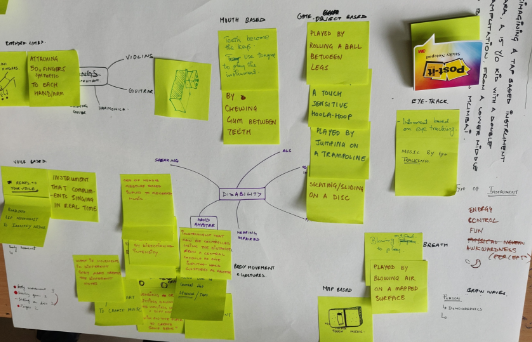
The goal of our project was to create a guitar accessory that includes single-hand amputees in the user-base of guitar players and shoppers. The accessory is meant to help the user learn to play using any guitar available to them, using a single hand.
We then presented these ideas to the other workshop members and also to some of Vaibhav’s friends who were differently-abled. This gave us some insight into our own thought process and how it could be made better.
Approach towards designing for disability
While as designers, it might be tempting to design a brand new instrument with different interactions, the goal of designing for differently-abled users in many cases is to allow them to access conventional instruments. This creates a level-playing field for all, allows collaboration and cultural inclusivity, and is also more accessible when it comes to availability of parts and equipment.
Design for the intangible experience of the instrument
while the initial approach was to make the instrument useful or therapeutic in some way, we realised that there are other experiences that we could specifically design for, for example the social and emotional effects of being involved in the culture surrounding an instrument. Could a person with a hand-amputation be able to play his favorite song on an electric guitar with a similar level of ease as a temporarily-abled individual?

We then presented these ideas to the other workshop members and also to some of Vaibhav’s friends who were differently-abled. This gave us some insight into our own thought process and how it could be made better.
Read the complete detailed documentation for this project
We then presented these ideas to the other workshop members and also to some of Vaibhav’s friends who were differently-abled. This gave us some insight into our own thought process and how it could be made better.
Read the complete detailed documentation for this project
We then presented these ideas to the other workshop members and also to some of Vaibhav’s friends who were differently-abled. This gave us some insight into our own thought process and how it could be made better.
Approach towards designing for disability
While as designers, it might be tempting to design a brand new instrument with different interactions, the goal of designing for differently-abled users in many cases is to allow them to access conventional instruments. This creates a level-playing field for all, allows collaboration and cultural inclusivity, and is also more accessible when it comes to availability of parts and equipment.
Design for the intangible experience of the instrument
while the initial approach was to make the instrument useful or therapeutic in some way, we realised that there are other experiences that we could specifically design for, for example the social and emotional effects of being involved in the culture surrounding an instrument. Could a person with a hand-amputation be able to play his favorite song on an electric guitar with a similar level of ease as a temporarily-abled individual?



We then presented these ideas to the other workshop members and also to some of Vaibhav’s friends who were differently-abled. This gave us some insight into our own thought process and how it could be made better.
Read the complete detailed documentation for this project



































